The Killer sees David Fincher deliver a lean, efficient and darkly funny hitman tale. Screen talks to the filmmaker and screenwriter Andrew Kevin Walker about bringing a French graphic novel to the screen.
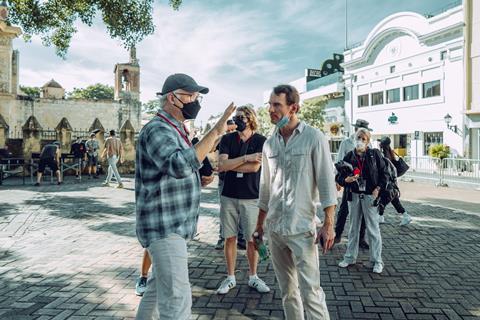
“Obviously, I’m drawn to nihilism,” says a grinning David Fincher, director of Se7en, Fight Club and Gone Girl, when asked why he wanted to adapt French graphic novel series The Killer into a film. “But I wanted to make a fucking Don Siegel movie. I wanted to make a Michael Winner movie. I’m so tired of slogging through characters you create to deliver some idea of backstory. What’s the greatest backstory in the history of motion pictures? ‘What were you doing in Chinatown, Jake?’ ‘As little as possible.’ It explains everything in one line.
“I love it when you can distil motivation down to these incredibly brief and simple evocations,” he continues. “I’m tired of two-hour 45-minute movies, and two-hour 30-minute movies. I’m tired of making them. I’m joking, but does it warrant it? Then I started thinking about Get Carter, Charley Varrick. Movies where it just is what it is.”
This was back in 2007, when the graphic novel series — written by Alexis ‘Matz’ Nolent and illustrated by Luc Jacamon, and first published in 1998 — was being developed into a film by Brad Pitt’s Plan B Entertainment and Paramount. Fincher was intrigued, but was directing Pitt in The Curious Case Of Benjamin Button, so was not ready to commit. “It wasn’t like you were going, ‘This has to be seen.’ It was more of a way to explore some things I was interested in — the broadest brushstrokes of backstory and this idea of intercepted thought. Why is it we assume when we hear a character’s thoughts that it’s the truth? I don’t know people who aren’t lying to themselves.”
Fincher approached Se7en screenwriter Andrew Kevin Walker, who had done uncredited rewrites on Fight Club and The Game as well as work on several unmade Fincher projects — among them The Girl Who Played With Fire, 20,000 Leagues Under The Sea, an adaptation of Arthur C Clarke’s Rendezvous With Rama and a remake of The Reincarnation Of Peter Proud — to see if he was interested in adapting The Killer. But Walker was not, according to Fincher. “He didn’t want to touch it then.”
“I don’t think I turned him down,” says Walker. “As is almost always the case with stuff he and I talk about, he comes to me with it, I begin to salivate, but I also tremble with fear because I won’t accept any job unless I feel I’m going to have a good chance of knocking it out of the park. But almost always, whether he thinks I passed on something or not, I got poised, ready to immerse myself. Then, if it never gets mentioned again, I never bring it up because we’re friends and I adore him, and I don’t want ever to be coming hat in hand, ‘Hey buddy, give me a job.’
“He told me the story beat by beat, off the top of his head,” continues Walker, “and I sat there and dutifully wrote it down in a little notebook. Then it didn’t happen.”
The long road
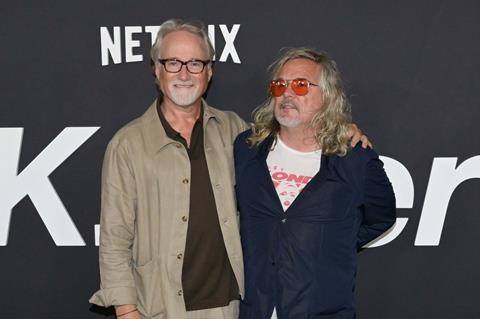
Meanwhile, Fincher busied himself with Zodiac, The Girl With The Dragon Tattoo, Gone Girl and Netflix shows House Of Cards and Mindhunter, but The Killer never quite went away. After the rights lapsed, Nolent wrote a script and asked Fincher if he was still interested. “I said, ‘I’m in the middle of some stuff right now. I’m making this Mindhunter thing, and I don’t know what I’m doing after that.’ Then I went and did Mank.”
That dreamily monochromatic peek behind the Hollywood curtain at the creation of Citizen Kane, written by Fincher’s late father Jack, was nominated for 10 Oscars, winning for cinematography and production design, and six Baftas, winning for production design. Post-Mank, he asked Walker again.
“There’s nobody like him,” says Fincher. “Almost everything is, ‘I can’t see a way,’ and then he goes and noodles. Four months later you’re at lunch and he’s got his John Doe composition books with the micro-illegible writing, and he says, ‘I think I have a take. Here’s what I would do.’ And that was much easier to say yes to. I took it to Netflix, and they said, ‘That sounds interesting.’ Then he wrote a draft.”
“The factor he may or may not have mentioned is there were a lot of times he was talking about doing it as a television show,” reveals Walker. “I didn’t know if I could see it expanded into TV, even a limited series. Finally, he said, ‘Let’s do it as a feature… that possibly will spin off into a show.’ That was perfect. The thing that really inspired me as I sat down to write was David Fincher told me the entire thing was going to look like the coolest perfume commercial you’ve ever seen.”
The Killer — which Netflix released on its platform in early November, following a Venice Film Festival premiere and brief theatrical outing — is lean (under two hours) and brutally efficient in its storytelling. The story unfolds in six chapters, each relating to a person — Charles Parnell’s ‘The Lawyer’, named Hodges after Get Carter director Mike, and Tilda Swinton’s ‘The Expert’ among them — and place — Paris, Dominican Republic, Florida et al — visited by Michael Fassbender’s unnamed hitman (credited as ‘The Killer’). The film opens with another of Fincher’s bravura title sequences that sets out the wham-bam TV show style from the get-go. “I wanted to do Mannix. I wanted it to be like a Quinn Martin [The Fugitive] production. ‘Tuesday nights on CBS…’” says Fincher.
In keeping with the hitman films that also inspired him — The Day Of The Jackal and Le Samouraï among them — Fincher needed a taciturn protagonist, a man of few words but ice-cold actions. “One of the things he said early on was, ‘I want The Killer to literally have 10 lines of spoken dialogue. The rest is voiceover,’” explains Walker. “I was like, ‘That’s amazing. That’ll be like writing a silent movie.’ I took it seriously. I tried to keep it to 10. When I finished, it was 13. I thought, a baker’s dozen. That’s close enough.”
So, while The Killer does not do chit-chat, he talks to himself constantly, communicating his detailed process, his personal philosophy and the rules he lives by — “Stick to the plan. Don’t improvise”, “Forbid empathy”, “Fight only the battle you’re paid to fight” — a strict code he breaks almost immediately as things get personal.
“I read a lot of Camus, I read The Stranger, I read a lot of Nietzsche,” says Walker. “I don’t think he’s strictly a nihilist. But there was a lot of research to find his Zen-like assassin’s list of promises he made to himself, his modus operandi.” The writer says he saw The Killer as “an alien among humans, studying us. I wanted, with the way he acted — the fact he never blinks — to suggest a subtle sense of him being an alien, eating the bare minimum, always paring stuff down. Now he eats a hardboiled egg, but I had him take a hot coffee and, as he’s driving, crack a raw egg into it and shake it up, so the egg is cooked, then consumed.”
To play The Killer, Fincher approached Fassbender, who had seemingly turned his back on Hollywood to race cars. “I got his email and said, ‘I’m going to send you something. I don’t know if you’re looking. I don’t know if you’re doing 24 hours in Le Mans, but I’d love to show it to you,’” recalls Fincher. “He wrote me back, ‘Absolutely, send it.’ Three hours later he said, ‘I’m in.’” A few years earlier, Fassbender had watched Le Samouraï and was looking to do something similar. “We lucked out,” continues Fincher. “I’d seen Haywire [Steven Soderbergh, 2011]. I’m a fan. I knew he could race at 200 miles an hour. I know he has control. The question becomes, do you want to come and refine it on a piece of material like this?”
The shoot
Principal photography began in Paris in November 2021. Fincher is famous for his precision, rigour and technical expertise, making him not unlike The Killer in pursuit of the perfect shot. This meticulous approach means he often shoots a large amount of footage. But even though Fassbender had not acted for a couple of years (Taika Waititi’s 2019-shot Next Goal Wins, which followed a two-year gap after making X-Men film Dark Phoenix), Fincher says he took barely any time to warm up to his way of filming.
“It was pretty apparent to him after the first half day, this is not Terry Malick, this is not experiential,” says Fincher in reference to the improvisational style of Malick who directed Fassbender in 2017’s Song To Song. “This is, ‘Did that. Next. Did that. Okay, moving on.’ At one point he said to me — and he was joking but I think it’s applicable — ‘What you want is precision modelling.’ And I was like, ‘Funny, but not entirely untrue.’ I find the actors I work best with are ones who are great at hand inserts, who have that kind of dexterity. He’s amazing at that stuff.”
As Fincher shot The Killer in France, Dominican Republic and the US — with regular collaborators producer Ceán Chaffin, cinematographer Eric Messerschmidt, editor Kirk Baxter, production designer Donald Graham Burt, and composers Trent Reznor and Atticus Ross — Walker stayed home and continued to hone the voiceover, right up to the very last moment. “There was much less in the first draft, and we realised, thanks to Fincher, it needed to be wall-to-wall. A lot of it coming directly out of his mouth, and I’m scribbling it down or typing it in. I had dozens of pieces. I’m proud of the voiceover because a lot of it is pitch perfect, in my not‑very-humble opinion. But I also think a lot of it is very funny.”
Funny is a not word that is often used to describe Fincher’s work. But in the case of The Killer, the director’s playful tone is hard to miss — from the incessant, often unreliable narration to the aliases Fassbender’s hitman uses (all 1970s and 1980s sitcom characters) to the bucket hat and beige clothes he wears, inspired by a German tourist Fincher saw in Paris, to the music he uses to get in the mood (UK indie band The Smiths).
In Walker’s initial draft, The Killer favoured “Brian Eno-esque music. I was picturing an alien listening to atonal music.” In post, Fincher experimented with everything from Joy Division to Siouxsie And The Banshees, Dusty Springfield to Mozart but, after deciding to use The Smiths’ ‘How Soon Is Now?’ as The Killer’s meditation music, he went all in, using 11 of the band’s songs in total. “Trent Reznor said it’s a weird window into who he is. There isn’t a catalogue in popular music as sardonic and wry.”
For UK audiences, there is also the somewhat incongruous sight of television presenter Fiona Bruce (Crimewatch, Antiques Roadshow) on the massive TV in the Florida home of a character known as The Brute (played by New Zealand stuntman/actor Sala Baker), to whom The Killer pays a late-night visit; the two men engage in an extended, bone-crunching explosion of violence. “We were looking for material that would play and we needed to clear the rights,” reveals Fincher of Bruce’s onscreen cameo. “I didn’t want to do a blue screen so we ended up going, ‘What does this hulking monster of a man watch?’ I love the idea of this terrifying guy watching a gardening show.” Fincher laughs. “It’s the stuff you can’t predict that’s funny.”




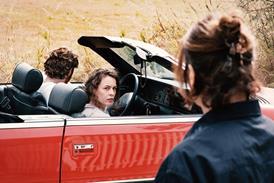



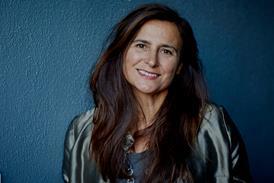




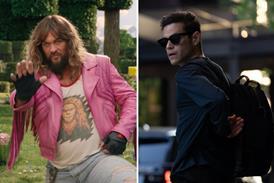



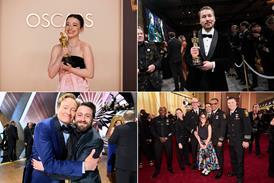







No comments yet